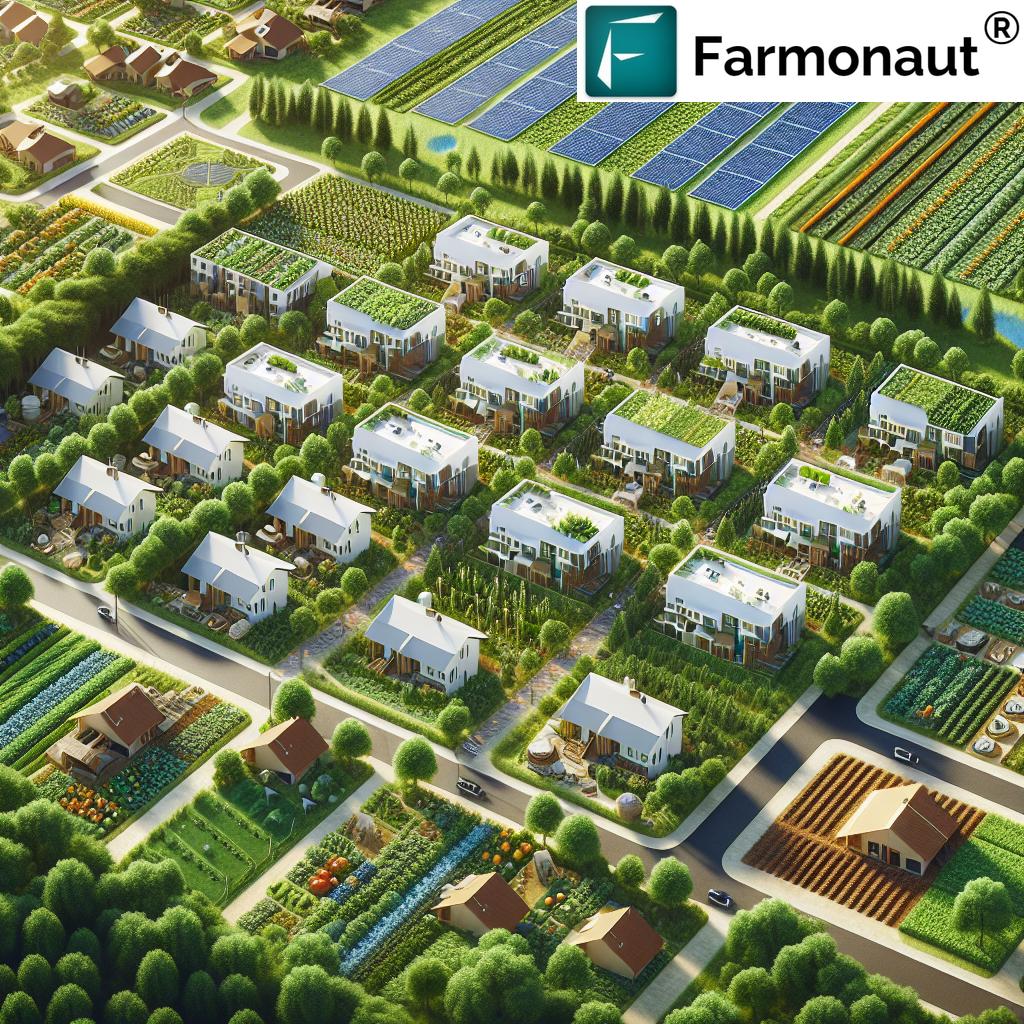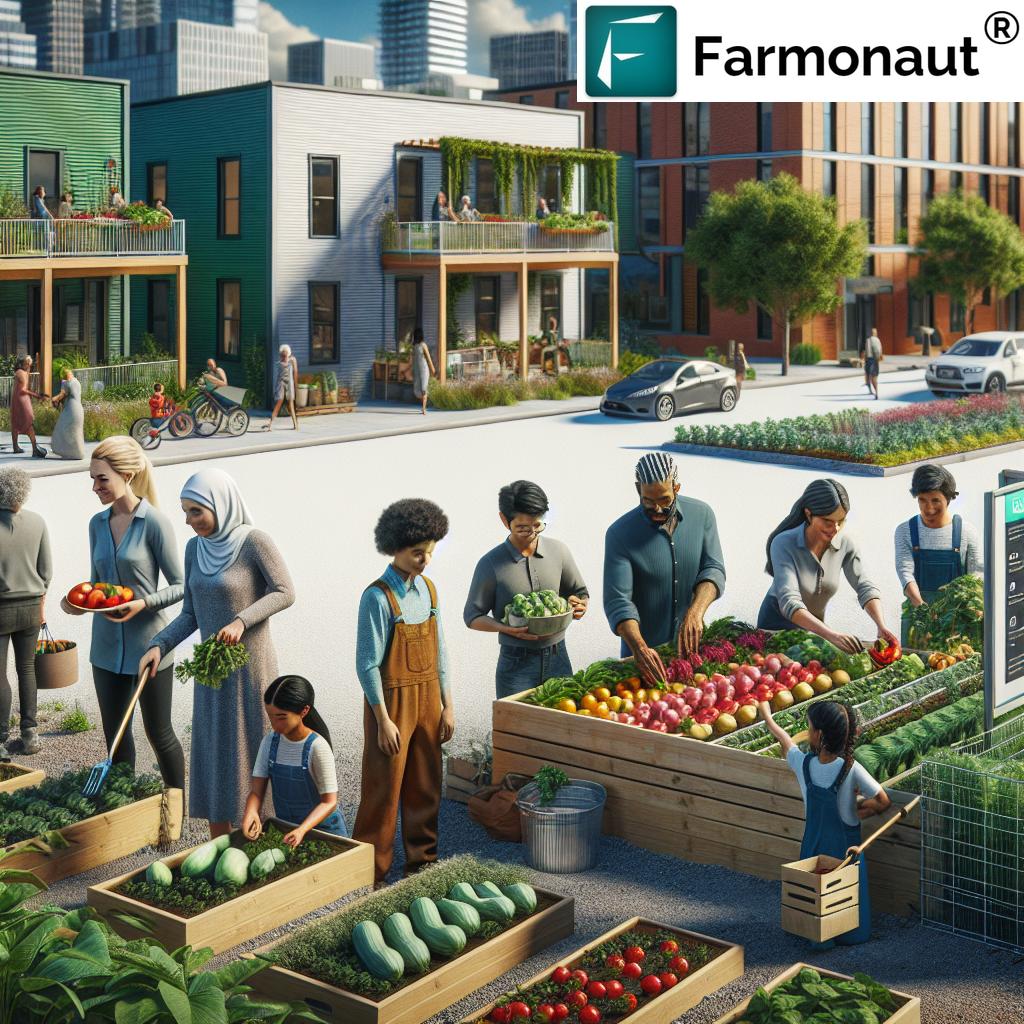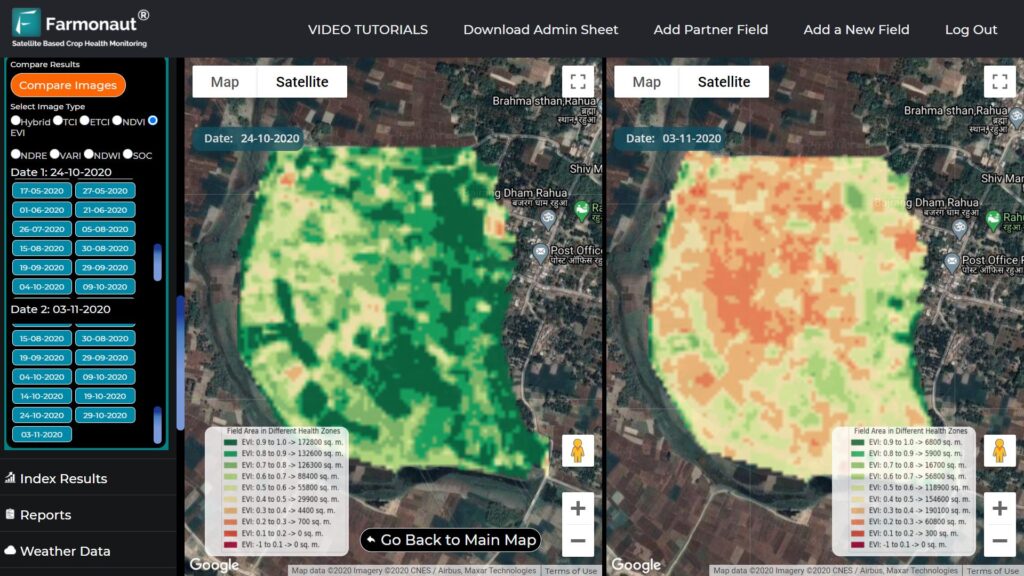Planned Agricultural Communities: 7 Agrihoods You’ll Love
“Over 200 agrihoods have been developed in the U.S., integrating sustainable farming with residential living.”
Introduction: The Rise of the Agrihood
In today’s fast-evolving world, our growing interest in environmental stewardship communities, food security, healthy living, and local resilience has driven the popularity of planned agricultural communities — better known as agrihoods. These developments offer a refreshing alternative to traditional suburban living, blending housing with working farms, community gardens, and shared green spaces. It’s about more than just eating local food: it’s a vision for a truly sustainable, connected, and health-focused lifestyle, where every day brings inspiration from the land beneath our feet.
In this comprehensive guide, we’ll dive into:
- How the agrihood model emerged and evolved, including its historical roots in intentional communities
- Key features and benefits of these unique residential farming communities
- In-depth profiles of seven inspiring agrihoods — from Arizona to Georgia to Vermont — that demonstrate the principles of sustainable living communities
- The economic, social, and environmental impacts — plus key challenges
- The transformative role of technologies like Farmonaut in shaping the future of these developments
By understanding these remarkable planned agricultural communities, we open doors to living closer to nature, fostering stronger neighborhoods, and designing a greener future for generations to come.
Historical Context and Evolution of Planned Agricultural Communities
While the term “agrihood” may be new, the concept is rooted in a long legacy of intentional, land-based community development. Let’s take a brief look at the history that shaped modern agrihoods:
Freedom Farm Cooperative: An Early Vision of Community Self-Sufficiency
Long before today’s organic farm neighborhoods, pioneers such as the Freedom Farm Cooperative in Mississippi (founded 1967) set a transformative precedent. Led by acclaimed civil rights activist Fannie Lou Hamer, Freedom Farm provided Black families with access to land, food, housing, and education. This cooperative model not only supported self-sufficiency and food security, but also championed economic empowerment and social justice. It remains a testament to the power of communities coming together through agriculture, blending political participation and daily livelihood.
From 20th Century Intentional Communities to Modern Agrihoods
Throughout the 20th century, intentional communities with farms attracted people seeking shared values, communal living, and direct connection to nature. By the 1990s, agrihoods became a formal part of urban planning — not just relief from urban sprawl, but blueprints for sustainable living communities built around food production and environmental principles.
Today, we see this legacy reflected in the best agricultural residential developments: purpose-driven neighborhoods where food, farm, education, and environmental care are central to an inspired lifestyle.
Key Features of Agrihoods: What Makes These Sustainable Communities Special?
At their heart, agrihoods thrive on the powerful synergy between agriculture and community-oriented residential living. Let’s explore the defining characteristics that set them apart from typical housing developments:
Centralized Working Farms and Community Gardens
- Integrated Farm Spaces: Most agrihoods are built around a central organic farm or community garden that supplies residents with a constant stream of fresh, locally grown produce.
- For example, Agritopia in Gilbert, Arizona features an 11-acre certified organic farm, while Cobb Hill in Vermont maintains extensive vegetable fields, orchard, and pasture.
Sustainable Design and Eco-Friendly Building Practices
- Homes and community spaces are constructed with green building methods: high-efficiency insulation, solar orientation, smart resource use, and energy-efficient appliances.
- Communities such as Cobb Hill lead the way in sustainability, minimizing their ecological footprint and supporting renewable energy.
Community Engagement, Education, and Social Interaction
- Educational programs — workshops, youth camps, farm tours — aim to cultivate knowledge of organic practices and healthy living.
- Frequently, design features (like shared gardens or narrow, pedestrian-friendly streets) encourage meaningful neighborly interaction.
- Serenbe in Georgia, for example, boasts regular farm-to-table dinners and wellness workshops, fostering a close-knit communal spirit.
Mixed-Use and Accessible Living Spaces
- Agrihoods blend housing with commercial and recreational areas —think farmers’ markets, small shops, playgrounds, and trails.
- This maximizes walkability and provides diverse opportunities for community gathering, food sales, and leisure activities.
Commitment to Environmental Stewardship and Health
- Most agrihoods implement organic farming, water conservation, wildlife-friendly landscaping, and reduced pesticide use.
- Direct access to locally grown fruits and vegetables not only benefits nutrition but encourages a deep sense of place and purpose.
“Agrihood residents can access up to 70% of their produce needs directly from on-site community farms.”
- Interested in monitoring your community’s carbon impact? Discover Farmonaut’s Carbon Footprinting tool, which tracks emissions in real time for farmers, agrihoods, and sustainable developments.
- Need complete transparency in your farm-to-table journey? Explore Farmonaut’s Blockchain-Based Traceability Solutions for building trust and supply chain accountability in agribusiness.
- Managing multiple community farms or forested areas? Use Farmonaut’s Large-Scale Farm Management Suite for remote satellite-based monitoring, soil moisture analytics, and efficient operations.
- Financial institutions and communities can reduce risk in crop insurance and loans with Farmonaut’s satellite verification.
- Integrate the latest weather and satellite data into your agrihood app via Farmonaut’s API or Developer Documentation.
Comparative Table: 7 Agrihoods You’ll Love
To help us understand the landscape of modern agrihoods, here’s a comparative table that highlights each community’s location, population, acreage, percentage of land dedicated to agriculture, main crops, sustainability practices, and unique features.
| Agrihood | Location | Population (Est.) | Total Acres | % Farmland | Main Crops/Products | Sustainability Practices | Unique Community Features |
|---|---|---|---|---|---|---|---|
| Agritopia | Gilbert, Arizona | ~1,000+ | 166 | 7% | Organic fruits, vegetables; chicken eggs; honey | Certified organic farming, sustainable irrigation | Farmers’ market, on-site restaurants, community gardens, front-porch housing |
| Serenbe | Chattahoochee Hills, Georgia | ~850 | 1,000 | 2.5% | Vegetables, herbs, mushrooms, flowers | Organic certified farm, natural building, energy efficiency | Hamlet clusters, community events, charter school, wellness center |
| Cobb Hill | Hartland, Vermont | ~60 | 260 | 23% | Dairy, maple syrup, vegetables, flowers, mushrooms | Solar orientation, shared resources, forest stewardship, green building | Co-housing, community work days, rotational grazing, maple production |
| Prairie Crossing | Grayslake, Illinois | ~400 | 677 | ~15% | Certified organic vegetables, grains, grass-fed beef, eggs | Renewable energy, wetlands preservation, organic crop rotation | Community barn, farmers’ market, nature trails, edible landscaping |
| South Village | South Burlington, Vermont | ~350 | 220 | 30% | Vegetables, berries, cut flowers | Green building, shared gardens, wildlife corridors, water conservation | Organic CSA farm, pond, walking paths, solar installations |
| Willowsford | Ashburn, Virginia | ~2,000+ | 4,000 | 4% | Vegetables, pastured eggs, honey, maple syrup | No-till farming, pollinator habitats, conservation easements, green design | Demo farm, adventure park, culinary programs, CSA, farm-to-table events |
| Harvest | Argyle, Texas | ~1,200+ | 1,150 | 2% | Fruits, vegetables, herbs, community orchard | Drip irrigation, native landscaping, seasonal crop planning | Community farm, teaching kitchen, pollinator gardens, parks, social activities |
In-Depth: The 7 Best Planned Agricultural Communities
1. Agritopia – Gilbert, Arizona: Community and Certified Organic Farming in the Desert
Nestled on 166 acres in Gilbert, Arizona, Agritopia is more than a residential neighborhood; it’s a creative example of integrating organic farming with diverse housing options, walkable spaces, and local produce distribution. At the heart is an 11-acre certified organic farm that supplies residents, local restaurants, and the wider Gilbert area with an abundance of fruits, vegetables, and eggs.
- Community gardens let neighbors grow their own food, while shared orchards and farmer’s market stalls bring the harvest right to the doorstep.
- The design encourages neighborly interaction, with narrow streets, front porches, and communal pathways enhancing daily connections.
- Sustainability is woven into every aspect through drip irrigation, minimal pesticide use, and organic practices.
2. Serenbe – Chattahoochee Hills, Georgia: A Southern Model of Wellness and Community
Serenbe is a 1,000-acre agrihood in Chattahoochee Hills, Georgia, composed of four “hamlets” arranged around a thriving 25-acre energy-efficient organic farm and CSA. With ample green space, horse trails, homes with geothermal heating and cooling, and regular wellness-focused activities, our Serenbe neighbors enjoy the best of community supported agriculture and rural tranquility just outside Atlanta.
- Residents benefit from farm-to-table dining, wildflower walks, and a rich schedule of festivals and workshops focused on health, sustainable living, and empowerment.
- Natural building materials, edible landscaping, and green spaces reflect the ethos of environmental stewardship communities.
3. Cobb Hill – Hartland, Vermont: Ecological Co-Housing, Forests, and Shared Labor
Founded as an intentional community, Cobb Hill (Hartland, Vermont) consists of 23 households collaboratively managing 260 acres of farmland and forest. The community is known for green construction (solar orientation, insulation), energy-efficient appliances, and a unique cooperative farming economy.
- Residents volunteer on the working farm (dairy, maple, vegetables, and mushrooms), deepen social bonds through shared chores, and enjoy sustainable communal spaces.
- Forest stewardship and rotational grazing are mainstays of sustainability in their agricultural approach.
4. Prairie Crossing – Grayslake, Illinois: Marrying Prairie Restoration with Organic Farming
On 677 acres, Prairie Crossing unites organic farming and restored prairie, creating a biodiverse, resilient model of sustainable living. The community supports local food production with CSA shares, an on-site barn, and direct farm-to-fork programs.
- The percentage of dedicated farmland is significant, offering organic vegetables, eggs, grains, and grass-fed beef.
- Wetlands, nature trails, and edible landscaping support wildlife and enhance neighborhood well-being.
5. South Village – South Burlington, Vermont: Local Food Production & Renewable Energy
South Village melds conventional suburban housing with a robust community farm operation, shared gardens, and solar installations.
- Organic CSA programs anchor education and social activities.
- Wildlife corridors and pond conservation enhance biodiversity.
6. Willowsford – Ashburn, Virginia: Innovation and Conservation in Residential Farming
At Willowsford, 4,000 acres are home to over 2,000 residents, with a central farm that supplies vegetables, honey, eggs, and maple syrup. Conservation easements ensure the land’s agricultural legacy and wild beauty for generations. Residents participate in culinary workshops, seasonal farm events, and connect through shared food production.
7. Harvest – Argyle, Texas: Community Orchards and Teaching Kitchens
Harvest provides more than 1,200 residents with not just healthy produce and organic farming but a suite of educational and wellness amenities, including a teaching kitchen, community orchard, and social spaces. With pollinator gardens and native landscaping, it’s a standout model in the southern U.S.
Major Benefits of Living in an Agrihood
Why are so many people drawn to these sustainable living communities? Let’s break down the advantages that make agrihoods such a compelling choice for families, developers, and environmentalists alike:
-
Local Food Production & Security
- Residents enjoy direct access to fresh produce, often through on-site farm stands, farm shares, or community-supported agriculture (CSA) programs.
- This reduces the need for long-haul transportation of food, slashing emissions and supporting local jobs.
-
Environmental Sustainability & Stewardship
- Organic practices, biodiversity support, permaculture, water efficiency, and renewable energy systems (solar panels, wind power) are common in environmental stewardship communities.
- Less lawn, more edible landscaping, and reduced chemical dependency are hallmarks of this approach.
-
Strong Community Bonds and Social Interaction
- Shared working spaces, community events, and volunteer opportunities foster a spirit of cooperation and belonging.
- Education programs teach children (and adults) valuable farming and environmental skills for lifelong impact.
-
Improved Health and Connection to Nature
- Outdoor activities, gardening, and exposure to nature support both physical and mental health.
- Dietary habits improve thanks to a steady supply of organic, locally grown fruits and vegetables.
-
Economic and Housing Diversity
- Many agrihoods are intentionally mixed-income, offering diverse homes and rental programs to broaden access.
- On-site food production can create supplementary income or savings for residents and support community-driven microbusinesses.
-
Education and Lifelong Learning
- Frequent workshops, farm tours, and cooking classes build environmental literacy and empower families to live more sustainably.
Challenges and Considerations of Agrihood Living
Despite their many upsides, agricultural residential developments face real-world hurdles. Understanding these factors is crucial for anyone considering creating, joining, or investing in an agrihood:
- Economic Viability: Operating a working farm within a residential area requires thoughtful planning and investment. Ongoing costs for labor, equipment, and organic certifications can be substantial.
- Land Use and Zoning: Not all municipalities have zoning laws that support the integration of agriculture and housing. Successfully navigating these challenges demands advocacy, cooperation with city planners, and sometimes policy change.
- Scalability and Replication: The model may need careful adaptation in regions with different climates, land values, or regulatory environments.
- Management and Participation: Success often depends on sustained participation by community members. Burnout, changes in leadership, and shifting resident priorities can impact communal engagement.
- Environmental and Climate Risks: Farms in dry or flood-prone regions need robust resilience plans — from soil conservation to water management.
- Equity and Accessibility: Deep commitment to affordable housing and inclusive programming is necessary to avoid green gentrification.
The Future of Planned Agricultural Communities: Innovations and Next Steps
As we look to the years ahead, the future of agrihoods and sustainable living communities appears bright. Urbanization, climate pressures, and a renewed interest in local food production are shaping:
- More Innovative Models: Combining urban density with vertical farming, rooftop gardens, and blockchain-based traceability (such as that provided by Farmonaut) for supply assurance.
- Smart Technology Integration: Satellite monitoring, real-time crop health insights, and resource analytics will empower communities to optimize yields and reduce environmental impacts.
- Deeper Community Engagement: Participatory design processes, education, and shared decision-making, ensuring every resident’s values shape the future of their neighborhood.
- Scaling Up and Down: Replicating successful agrihood principles in both dense urban environments and rural revitalization initiatives.
- Environmental Compliance and Climate Adaptation: Adoption of carbon tracking tools (Farmonaut Carbon Footprinting), organic standards, and water resource management help meet increasingly stringent regulatory standards.
Planned agricultural communities are not just a lifestyle choice — they’re blueprints for more resilient cities, healthier populations, and a planet-centric economy. With technology, creativity, and community spirit, their influence will only continue to grow.
Farmonaut: Accelerating Sustainability in Agrihoods with Advanced Technology
Farmonaut stands at the intersection of agriculture, technology, and sustainable development. For agrihood residents, developers, and managers, Farmonaut offers not just precision tools for crop monitoring and resource management but also a commitment to making precision agriculture accessible at every scale.
How Farmonaut’s Innovations Support Planned Agricultural Communities
- Satellite-Based Crop Health Monitoring: Real-time NDVI and multispectral imaging lets us monitor plant stress, soil moisture, and overall farm health across large community farms and gardens — directly from an intuitive app or web dashboard.
- Jeevn AI Personalized Advisor: AI analyzes satellite, weather, and field data to offer tailored farming recommendations — from pest alerts to irrigation scheduling — keeping community gardens thriving and resilient.
- Blockchain Data for Traceability: For communities engaging in farm-to-market sales, Farmonaut’s traceability solutions guarantee the authenticity and transparent journey of all organic produce.
- Resource & Fleet Management: Community managers can effectively track agricultural equipment, optimize labor, and even coordinate deliveries of locally grown produce for eco-friendly, cost-effective operations.
- Carbon Footprinting: Farmonaut enables real-time climate impact analysis, empowering communities to shrink their environmental footprint while boosting sustainability.
The platform is modular and scalable — whether you’re managing a single communal plot or a multi-acre residential cooperative, Farmonaut brings the future of agriculture to your fingertips.
Farmonaut Subscription Plans
Affordable, scalable, and tailored for farms of any size, Farmonaut’s subscription plans let us deliver ongoing crop monitoring, AI insights, and supply chain tracking to your planned agricultural community.
Frequently Asked Questions (FAQ) about Agrihoods
-
What is an “agrihood”?
An agrihood is a planned residential community built around a working farm or agricultural operation, designed to offer fresh local food, environmental stewardship, and direct engagement in farming for its residents. -
How do agrihoods differ from traditional suburbs?
Agrihoods integrate food production and sustainable land use into the very core of the neighborhood, providing communal gardens, farm-to-table programs, and strong community bonds—rather than separating “housing” and “farms.” -
What kinds of homes are available in agrihoods?
These communities often offer a mix — from single-family homes to co-housing, rental apartments, and townhouses. Designs emphasize walkable, neighborly layouts with shared green spaces. -
Can non-farmers live in an agrihood?
Absolutely! Most residents are not professional farmers, but enjoy the opportunity to participate in community gardening, workshops, and sustainable activities as much (or as little) as they choose. -
Are agrihoods affordable?
Many agrihoods are pursued by developers and non-profits committed to affordable and mixed-income housing, but costs can vary by location, size, and amenities. -
How do community members participate in the farm?
Members may buy into a CSA, volunteer at the farm, join gardening groups, or attend workshops and events throughout the year. -
Is the produce organic?
Most agrihoods use organic practices or are certified organic, ensuring residents have access to healthy, chemical-free food. -
How do agrihoods contribute to environmental sustainability?
Through climate-smart farming, renewable energy, minimal chemical inputs, water conservation, biodiversity, natural building materials, and environmental stewardship. -
What role does technology play in modern agrihoods?
Technology (like satellites and smart sensors) is increasingly used for efficient farm management, precision irrigation, and even blockchain-tracked supply chains, as enabled by platforms such as Farmonaut. -
Can I start an agrihood in my city?
With careful planning, stakeholder engagement, and the right land/zoning, new agrihoods are possible — and local experts or planners can guide the process to integrate community supported agriculture and sustainable design.
Conclusion: Building a Greener Future, One Community at a Time
Planned agricultural communities such as agrihoods inspire us to reconsider what residential living can look like. By integrating agriculture into daily life, embracing local food production, and fostering vibrant community engagement, we can cultivate neighborhoods that are resilient, healthy, and deeply rooted in stewardship of the land.
As more families, developers, and civic leaders embrace the agrihood model, we move towards a future where fresh food access, environmental sustainability, and social cohesion are not luxuries — but built into the foundations of where we live. And with innovative technologies like Farmonaut supporting smart, scalable, and accessible agriculture, that future is closer than ever.
Let’s plant the seeds of change together!


















